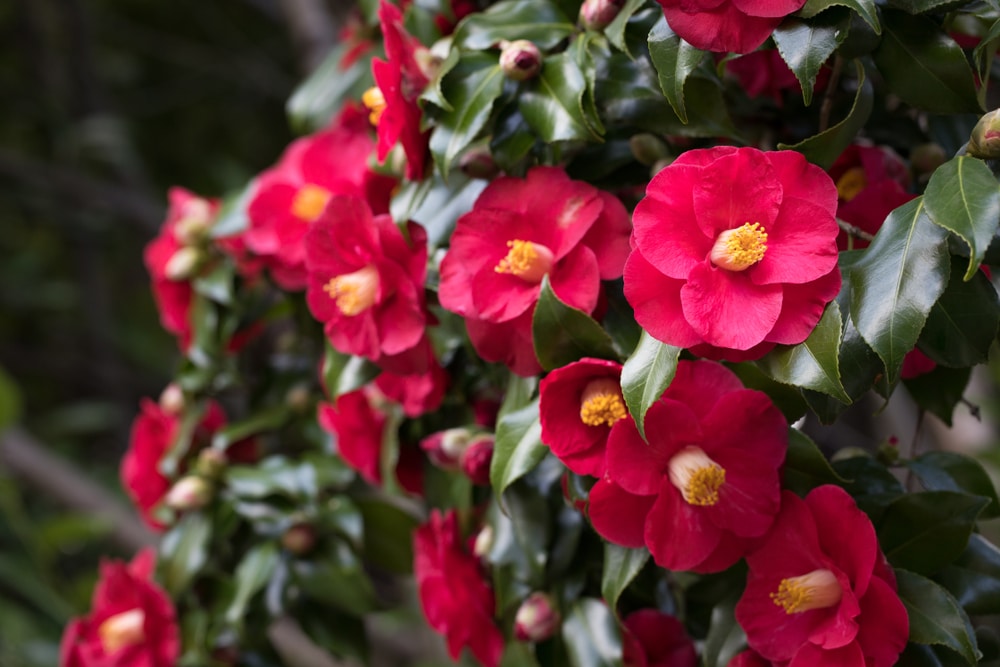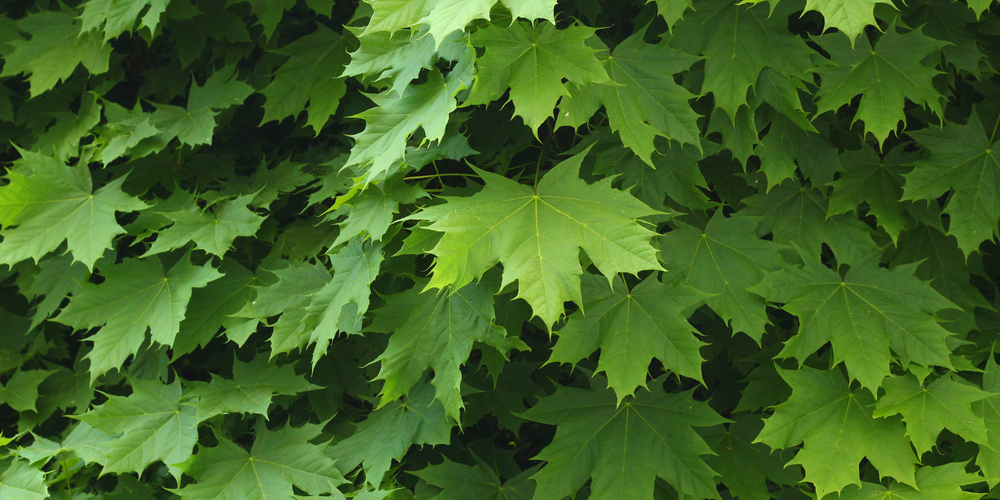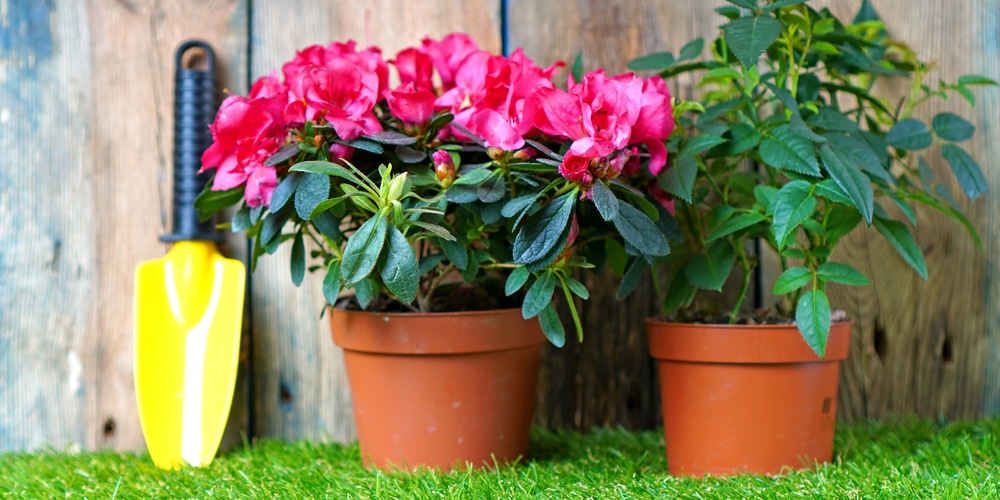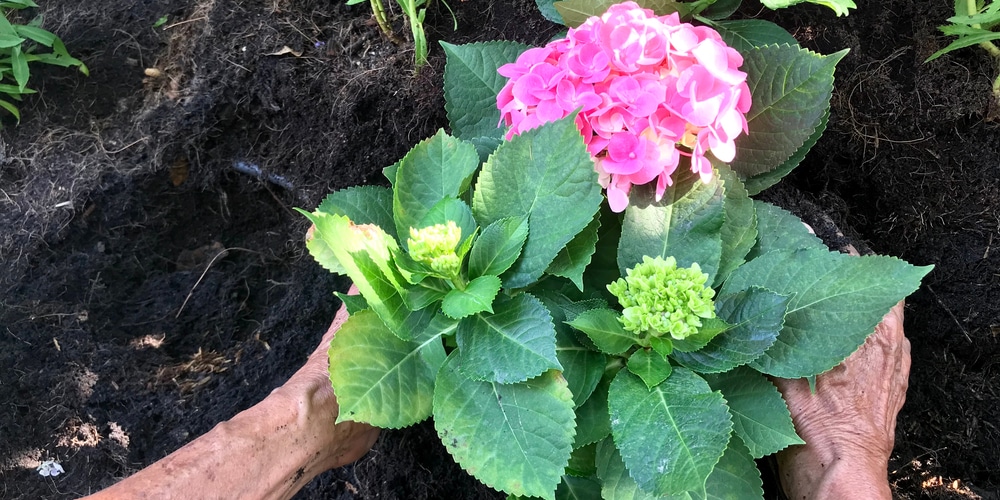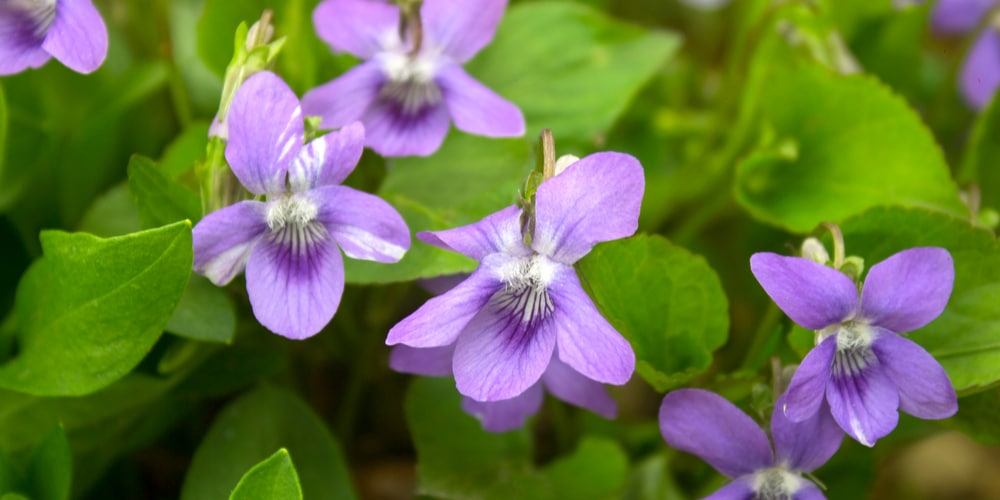Camellias are attractive evergreen shrubs that produce elegant blooms that you can admire in the winter season. Not for anything, most gardeners refer to them as the “queens of winter flowers.”
Camellias generally grow well in USDA hardiness zones between 6 and 9 and need some moisture to thrive. If you live in a dry region, you may need to water them frequently. However, this doesn’t make these lovely plants hard to grow. On the contrary, camellias can withstand various conditions and are available in different varieties.
Let’s look at the best camellia companion plants!
Camellia Companion Plants
These plants do not need companion plants to increase the aesthetics of your garden: they look stunning on their own. However, if you like the idea of making your yard even more attractive, consider adding some camellia companion plants to your flower bed. Luckily, you can choose among many plants to combine and complement their growth and development.
Deciduous Trees
Camellias perform well under deciduous trees. The shedding of leaves allows some exposure to the winter sun and contributes to more voluminous blooms. Plus, the (usually) non-invasive roots of deciduous trees allow camellias to absorb nutrients and water without competing.
Pick trees such as elms, maples, crabapples, oaks, and cherries to provide a beautiful contrast in color and ensure “free mulching” to the soil. Indeed, falling leaves can increase water retention and improve absorption by creating a mulch surface around your plants.
Also, some trees can complement camellias’ beauty and contribute to an even more beautiful garden. Choose to pair your camellias with Japanese maples or deciduous magnolias to add breathtaking blooms in the summer and spring. Don’t forget that trees can add texture and form to your flowering plants.
Flowering Plants
Camellias do well with most flowering plants. Of course, before pairing two species, ensure both have similar cultural requirements. Some camellia companion plants we recommend include rhododendrons, azaleas, gardenias, ericas, and daphnes.
These plants all like to like in acidic environments and can contribute to your garden’s beauty. In particular, rhododendrons and azaleas make ideal companion plants to camellias. Their bright colors are a feast to the eye during the spring. In the summer and fall, these plants produce dense foliage that adds a pleasing deep green color to your yard. L
uckily, you can choose among more than 20 species of native American rhododendrons and 16 azaleas. Unleash your creativity and try a combination that satisfies you!
Companion Shrubbery
Camellias are ornamental plants that look stunning among shrubs, especially during the wintertime. Besides the aesthetic benefit, shrubs can complement camellia’s growth. If you can’t provide your plants with adequate shade, you can select a companion shrubbery for your camellias.
However, choosing the right location (and regular pruning) will be crucial. Your shrubs shouldn’t swamp your flowering plants and diminish their performance. To prevent that from happening, you may want to consider getting deciduous shrubs like hydrangeas, fuchsias, lonicera, and mahonias.
Shade-Loving Plants
If you are trying to create an attractive flower bed in your garden, you should consider pairing camellias with some groundcovers. These plants are not aggressive and will contribute to better soil and nutrient retention to allow your camellias to thrive.
You may have to add a drip watering system for better results. Try adding bergenia, ground cover ferns, native violets, and ajugas. However, monitor them closely at the beginning to prevent these plants from overthrowing your garden.
Camellia Companion Plants: The Bottom Line
Camellias don’t have to live isolated. While they can be the protagonists of your garden (after all, they are beautiful), you can pair them with other plants to increase water retention, protect them from attacks from harmful pests, improve the soil conditions, or complement their beauty.
You may have to try and experiment for a while before finding the ideal combination for your garden conditions, but the hard work will be worth it in the end. Remember that the myth that camellias will grow in the shade is just that: a myth. In reality, like most flowers, these flowering plants require at least some hours of sunlight during the day.
For this reason, avoid planting them next to high plants that might shade all the light. While you can find varieties that do better in the shade, finding companion plants for camellias that thrive under the sun will be easier.
